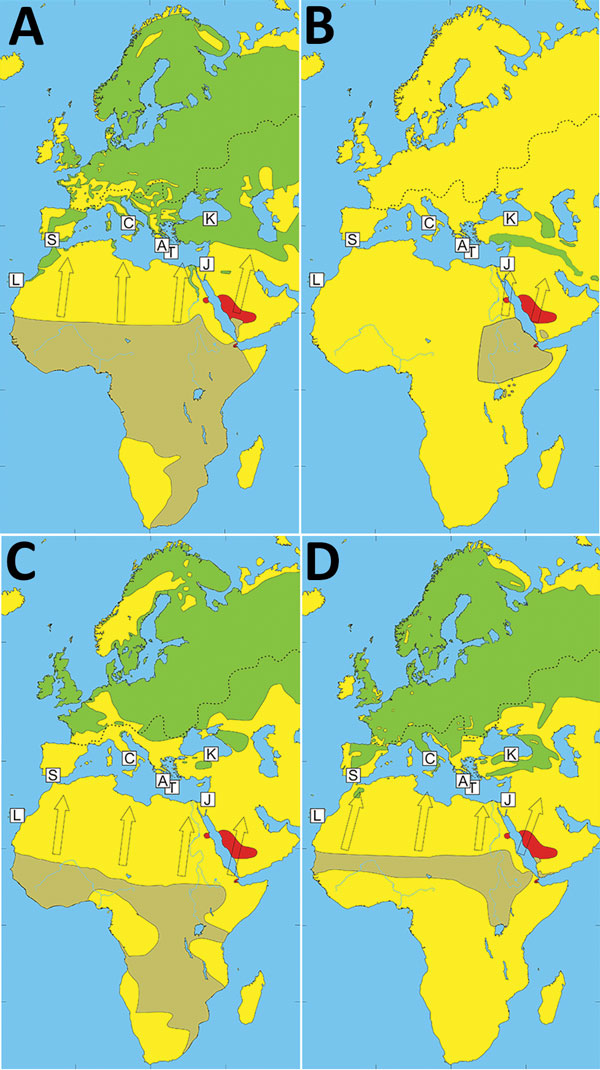Volume 24, Number 5—May 2018
Dispatch
Alkhurma Hemorrhagic Fever Virus RNA in Hyalomma rufipes Ticks Infesting Migratory Birds, Europe and Asia Minor
Figure 1

Figure 1. Wintering (light brown) and breeding (green) locations and springtime migratory routes (arrows) of birds testing positive for Alkhurma hemorrhagic fever virus (AHFV) RNA in Greece and Turkey, 2010 and 2014. The 4 bird species found infested by Hyalomma ticks carrying AHFV RNA were the western yellow wagtail (Motacilla flava) (A), eastern woodchat shrike (Lanius senator niloticus) (B), sedge warbler (Acrocephalus schoenobaenus) (C), and common redstart (Phoenicurus phoenicurus) (D). Red shading indicates areas where AHFV has been detected. The dashed line shows the approximate northern geographic boundary of H. marginatum complex ticks (based on information from the European Center for Disease Prevention and Control, https://ecdc.europa.eu/en/disease-vectors/surveillance-and-disease-data/tick-maps). H. rufipes ticks have a wide geographic distribution in Africa and are present in Saudi Arabia. Collection sites are labeled: Andikíthira, Greece (A); Capri, Italy (C); Jerusalem, Israel (J); Kizilirmak Delta, Turkey (K); Huelva and Sevilla Provinces, Spain (S); Canary Islands, Spain (L); and Crete, Greece (T). Maps created based on information from The Birds of the Western Palearctic, volumes 5–7, Oxford (UK): Oxford University Press; 1988, 1992, 1993.